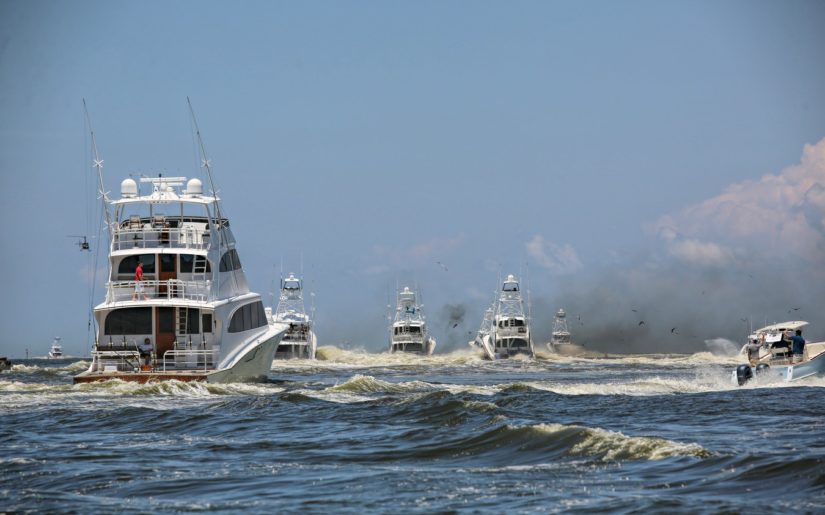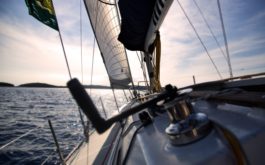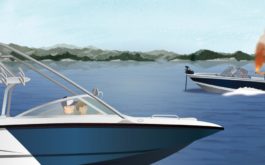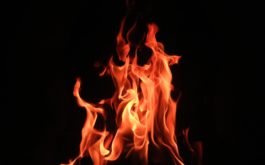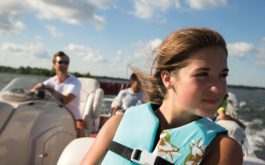Breakdown and mechanical failure
You are required by law to maintain your craft and safety equipment in proper working order. You’ll reduce the risk of an unexpected breakdown by regularly maintaining and inspecting your vessel.
If your craft has broken down or is inoperable due to mechanical failure:
- Use an anchor to secure your craft, if necessary. Use a manual propelling device (such as a paddle or oars) to manoeuvre your craft to a safe area before anchoring. Set your anchor immediately if you have lost all power and are drifting towards significant danger.
- Investigate the cause of the breakdown or failure.
- If possible, correct the problem.
- If necessary, signal your need for assistance using a recognized distress signal.
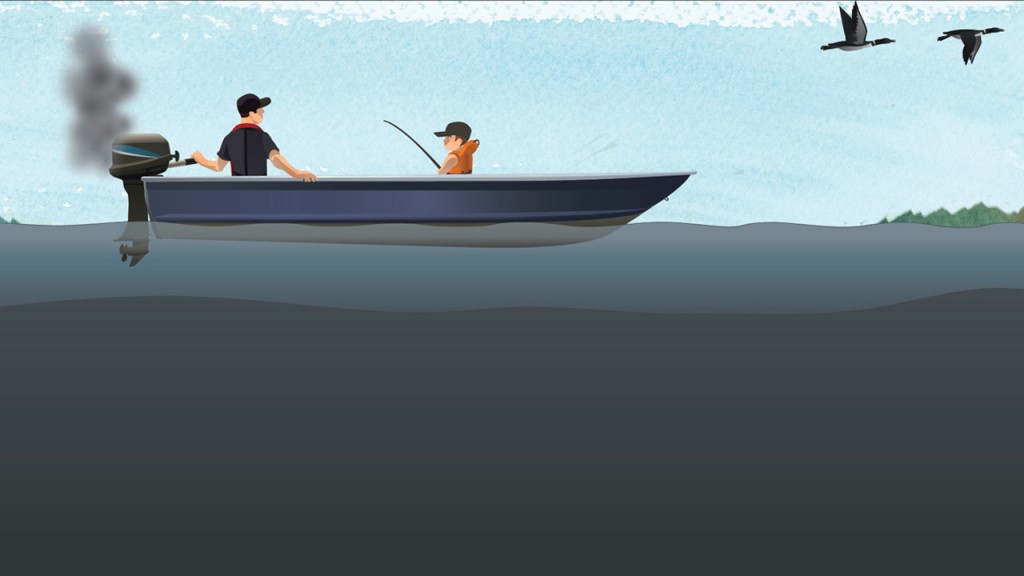
Remember: You should always carry a tool kit including:
- Spare bulbs (appropriate for your craft)
- Spare fuses
- Grease, penetrating oil and rags
- Spare oil (4-Stroke or 2-Stroke depending on your type of engine)
- A second safety lanyard (PWC operators)
- Spare spark plugs (appropriate for your engine)
- Basic toolset
- Common nuts and bolts
- Tie straps and duct tape
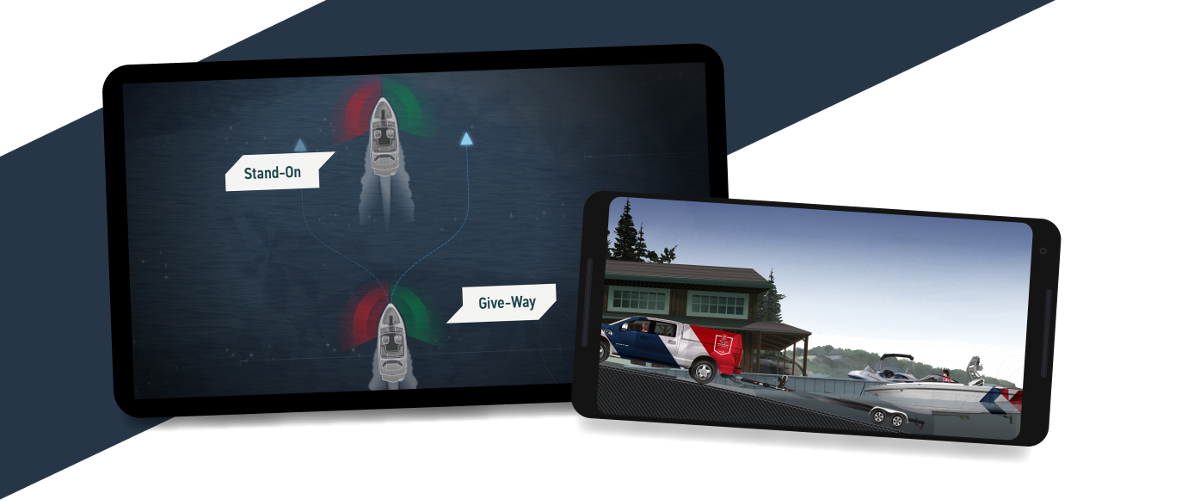
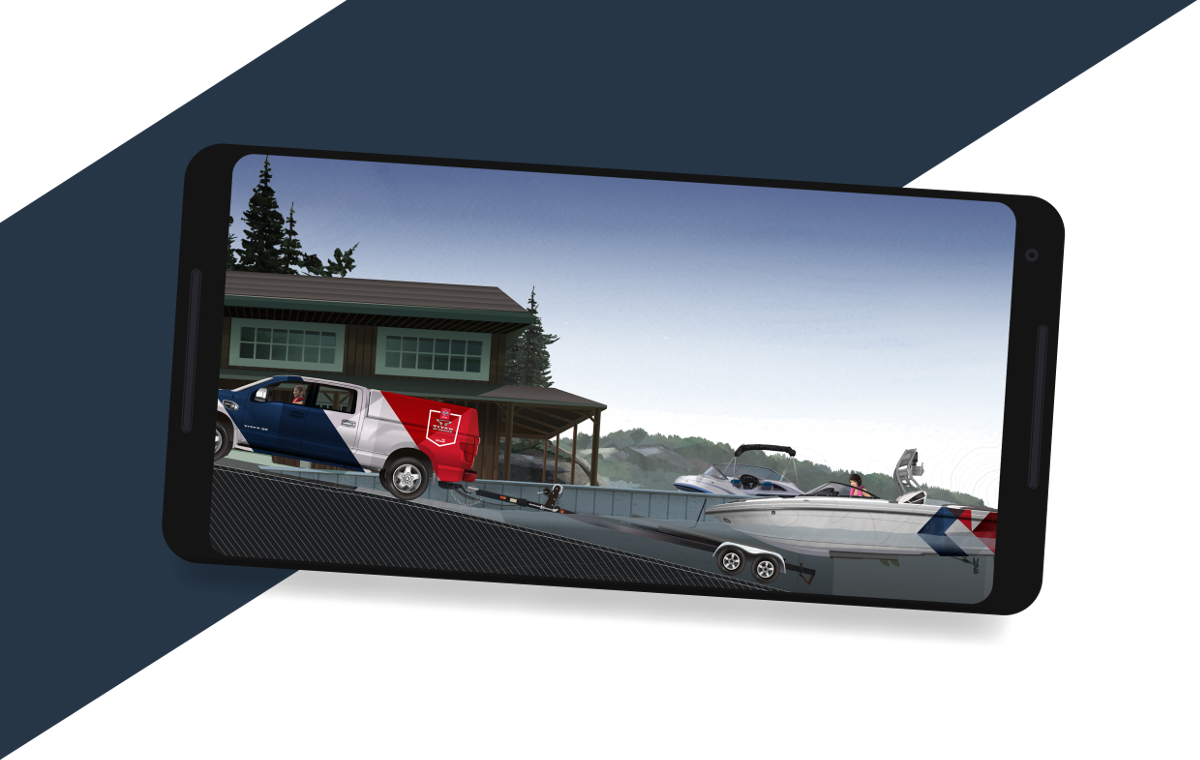
Get your Official North American
Boating License
The Official NASBLA and Transport Canada Boating Course, Test & License.
Get your Official North American
Boating License
The Official NASBLA and Transport Canada Boating
Course, Test & License.
Carbon Monoxide
Carbon Monoxide (CO) is a deadly gas you can’t see, smell or taste. The gas is produced by anything that burns carbon-based fuel (gasoline, propane, charcoal, oil, etc.), including engines, generators, cooking ranges and heaters. It spreads evenly throughout an enclosed space and is undetectable. CO build-up can occur between the pontoons of a houseboat or a pontoon boat. Therefore be aware when swimming from a boat equipped with pontoons.
CO is inhaled into your lungs and cuts off the oxygen supply to your body, which can kill in minutes. Be alert to flu-like symptoms, which can include headaches, nausea and fatigue.
Operators of boats with fuel burning appliances, such as cooking ranges in houseboats, should be aware of the increased risks of CO poisoning. Swimmers or people being towed closely behind a boat with engines operating are also at increased risk of CO poisoning. Therefore be on special alert when being towed by a boat.
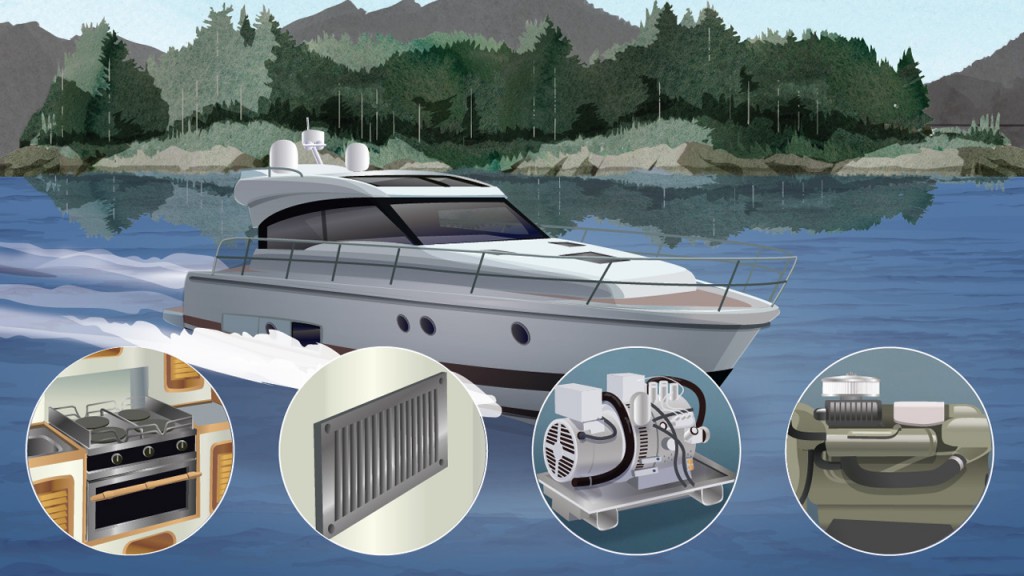
Be sure to protect yourself and others from CO poisoning:
- Use a marine grade CO detector and check the batteries before each trip
- Only idle your engine in well-ventilated areas and recognize that winds from the stern can carry CO back onboard
- Only heat your boat’s cabin or cook when in a well-ventilated area
- Use only fuel-burning engines or appliances that are certified or designed for marine use
- Proper use of ventilation systems and blowers on your craft can reduce the risk of CO poisoning
If you think you’ve been poisoned, treat yourself by:
- Moving to fresh air away from the source of CO
- Seeking medical/emergency help immediately
